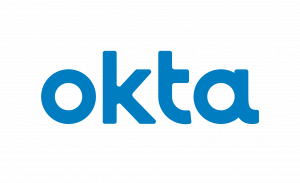Customer identity and access management (CIAM) is a complex undertaking, requiring agencies to manage user logins, self-service registration and identity databases at scale. Unfortunately, the public is not inclined to give agencies a break when it comes to CIAM. Fair or not, public expectations have been defined by the private sector, which has shown that CIAM can be simple, private and secure.
Although that’s true of modern CIAM tools, many agencies use outdated ones, which are often inflexible, costly to maintain and difficult to secure. These shortcomings often produce a dissatisfying customer experience (CX).
“Doing identity, especially the legacy way, is hard,” said Peter Zavlaris, CIAM Product Marketing Manager at Okta. “It’s tons of workflows and procedures. It’s high-cost and high-complexity, and it makes for a poor CX.”
Developers are the first people to face trouble from legacy CIAM. They need more energy, funding and time to update their CIAM tools. “If you’re not efficient, you don’t get to market or iterate fast,” Zavlaris said.
Legacy CIAM also presents management challenges for agencies. For instance, aging CIAM databases are often complex and require significant maintenance and upkeep. As a result, one software patching cycle can take staff away from more important projects for months.
Legacy CIAM is often custom-built without considering security features such as multi-factor authentication, threat detection and reporting. Without these, agencies are more vulnerable to cyberthreats. “There’s a multitude of different vulnerabilities that exist,” Zavlaris said. “One of the most common application vulnerabilities on the internet, for example, is broken authentication.”
Finally, older CIAM tools tend to produce fragmented experiences such as multiple applications that require customers to create unique credentials for each. “How do you make sure you’re not asking people the same questions about themselves?” Zavlaris asked. “People will not want to interact with the services that you’re creating.”
The Solution: Cloud-Based CIAM
CIAM thrives when four capabilities exist: frictionless user experiences, accelerated speed-to-market development, centralized access management and internet-scale security.
Fortunately, these four capabilities can be achieved with cloud computing. Cloud’s agility, flexibility and scalability make it an ideal platform for modernizing CIAM. “Bringing in a cloud-based identity solution takes a massive burden off the developers,” Zavlaris said.
First, cloud-based CIAM can help enable frictionless user experiences that are consistent, convenient and pleasing. It can also provide agencies with a unified profile view of citizens by granting an interface for collecting and storing authoritative first-person profile information that can be accessed across channels.
Next, cloud-based CIAM’s adaptability allows developers to quickly deploy new or updated tools, such as social authentication, so that they reach citizens faster.
After that, cloud-based CIAM can provide agencies with centralized access management for their users. That makes managing agencies’ applications smoother and more straightforward, and ultimately, agencies’ CIAM grow more efficient, effective and nimble.
Lastly, cloud-based CIAM can reduce the cybersecurity risks for agencies and citizens alike by simplifying agencies’ compliance with security regulations and updating their cyberdefenses.
This article is an excerpt from GovLoop’s recent report, “Modernizing Citizen Experiences With Cloud Identity.” Download the full report here.






Leave a Reply
You must be logged in to post a comment.